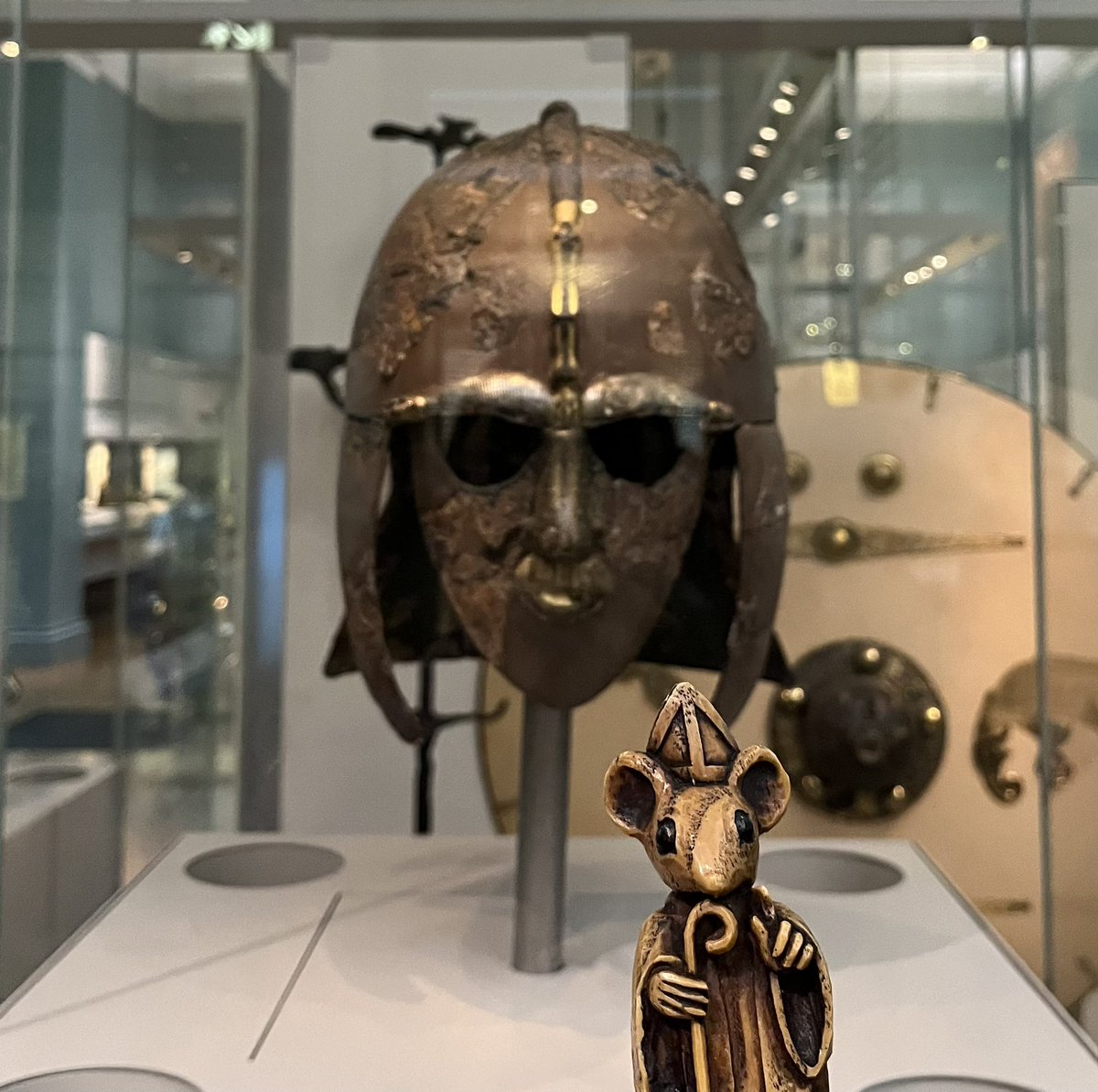
One of Hertfordshire’s leading ecclesiastical rodents, who enjoys sharing historical tidbits on his travels and tending to his mischief.
How to get URL link on X (Twitter) App


 The story begins with King Henry’s accession to the throne in 1509 at the age of 17. He wanted to signal a change away from his father’s unpopular policies, and one of the ways he chose to do that was by getting married. (2/17)
The story begins with King Henry’s accession to the throne in 1509 at the age of 17. He wanted to signal a change away from his father’s unpopular policies, and one of the ways he chose to do that was by getting married. (2/17)

 First, a bit of background. In 1939, amateur archaeologist Basil Brown discovered what turned out to be the most spectacular medieval grave ever found in Britain at Sutton Hoo in Suffolk. That remarkable discovery is brilliantly portrayed in the film “The Dig” on Netflix. (2/13)
First, a bit of background. In 1939, amateur archaeologist Basil Brown discovered what turned out to be the most spectacular medieval grave ever found in Britain at Sutton Hoo in Suffolk. That remarkable discovery is brilliantly portrayed in the film “The Dig” on Netflix. (2/13)

 Let’s start with St Augustine. At the Pope’s command, he left Rome for pagan Kent with a merry band in 596. Well, actually not *that* merry. A few of them apparently took some convincing to undergo an arduous journey only to end up in cold, wet Blighty. (2/18)
Let’s start with St Augustine. At the Pope’s command, he left Rome for pagan Kent with a merry band in 596. Well, actually not *that* merry. A few of them apparently took some convincing to undergo an arduous journey only to end up in cold, wet Blighty. (2/18)

 In January 1066, Edward the Confessor died after a remarkably peaceful and prosperous reign of over twenty years. He had no children, and no surviving brothers or uncles, and so the question arose… who would succeed him as King of England? (2/20)
In January 1066, Edward the Confessor died after a remarkably peaceful and prosperous reign of over twenty years. He had no children, and no surviving brothers or uncles, and so the question arose… who would succeed him as King of England? (2/20)

 After the Romans left Britain, various waves of settlers arrived on these shores looking for a better life - people like the Angles, Saxons and Jutes. By the late sixth century, they had begun to form into small kingdoms, displacing or dominating the native Britons. (2/15)
After the Romans left Britain, various waves of settlers arrived on these shores looking for a better life - people like the Angles, Saxons and Jutes. By the late sixth century, they had begun to form into small kingdoms, displacing or dominating the native Britons. (2/15)

 1. Henry VIII was never a true Protestant. He readily saw the theological merits of making himself head of the Church in England and disbanding the monasteries, both of which just so happened to benefit him personally. But in religious practice, he did not shift much at all…
1. Henry VIII was never a true Protestant. He readily saw the theological merits of making himself head of the Church in England and disbanding the monasteries, both of which just so happened to benefit him personally. But in religious practice, he did not shift much at all…

 The first big act of rebellion came in Dover in 1067. Kentish rebels attacked the castle, supported by the Count of Boulogne. Things began well, but by the end of the day some Englishmen were throwing themselves off the white cliffs as they desperately tried to escape. (2/15)
The first big act of rebellion came in Dover in 1067. Kentish rebels attacked the castle, supported by the Count of Boulogne. Things began well, but by the end of the day some Englishmen were throwing themselves off the white cliffs as they desperately tried to escape. (2/15)

 Edward was born just outside Oxford in ~1004. His father was Æthelred the Unready, who’d been King of England for 25 years. His mother was the formidable Emma, sister of the Duke of Normandy. Quite the power couple.
Edward was born just outside Oxford in ~1004. His father was Æthelred the Unready, who’d been King of England for 25 years. His mother was the formidable Emma, sister of the Duke of Normandy. Quite the power couple.

 Athelstan was born in ~894, the eldest son of Edward the Elder and Ecgwynn. His father became King of the Anglo-Saxons in 899, but ruled only Wessex (the south) and parts of Mercia (the midlands). Northumbria, East Anglia, and the rest of Mercia were all in Viking hands.
Athelstan was born in ~894, the eldest son of Edward the Elder and Ecgwynn. His father became King of the Anglo-Saxons in 899, but ruled only Wessex (the south) and parts of Mercia (the midlands). Northumbria, East Anglia, and the rest of Mercia were all in Viking hands.